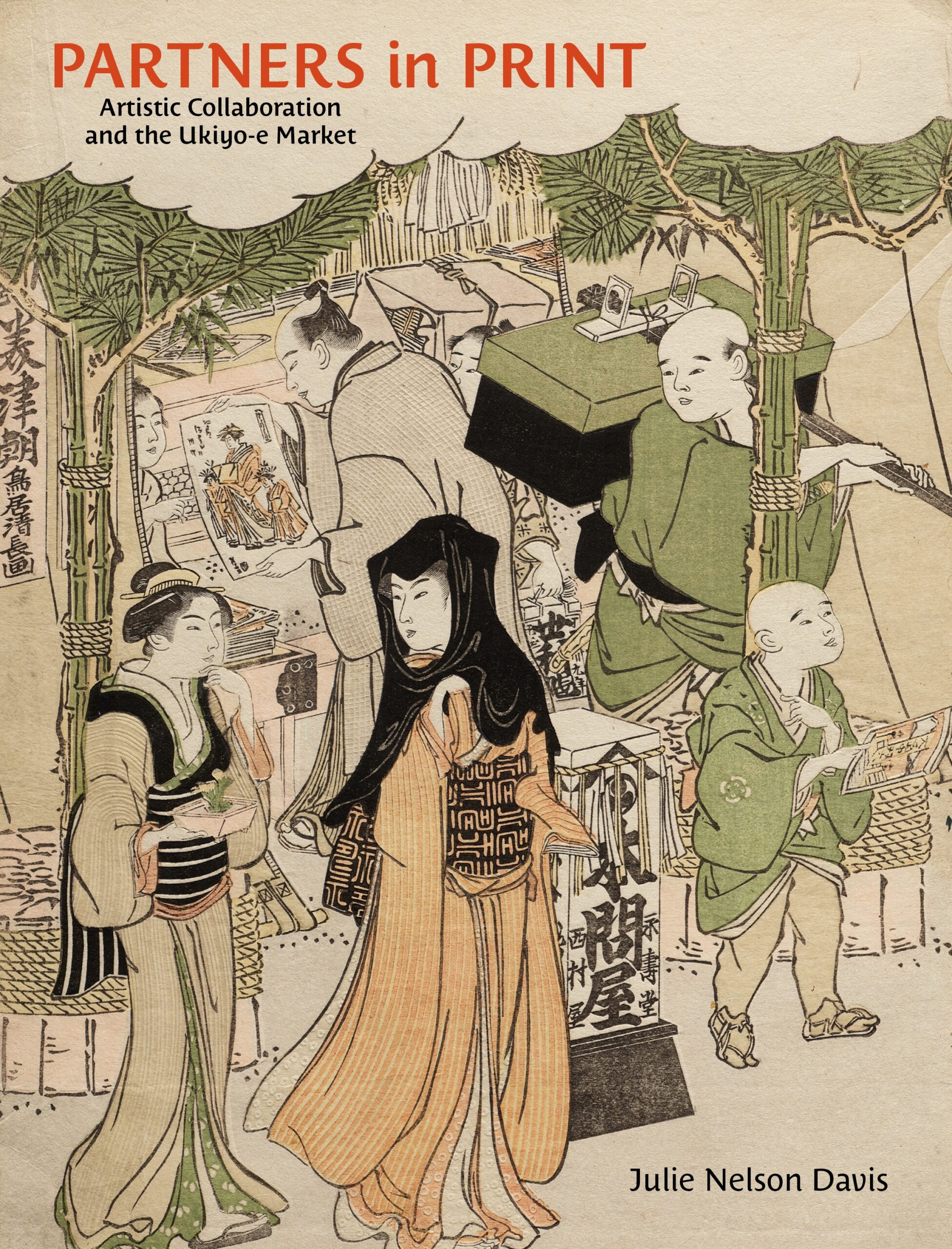Partners in Print: Artistic Collaboration and the Ukiyo-e Market
- About the Book
-
This compelling account of collaboration in the genre of ukiyo-e (pictures of the floating world) offers a new approach to understanding the production and reception of print culture in early modern Japan. It provides a corrective to the perception that the ukiyo-e tradition was the product of the creative talents of individual artists, revealing instead the many identities that made and disseminated printed work. Julie Nelson Davis demonstrates by way of examples from the later eighteenth century that this popular genre was the result of an exchange among publishers, designers, writers, carvers, printers, patrons, buyers, and readers. By recasting these works as examples of a network of commercial and artistic cooperation, she offers a nuanced view of the complexity of this tradition and expands our understanding of the dynamic processes of production, reception, and intention in floating world print culture.
Four case studies give evidence of what constituted modes of collaboration among artistic producers in the period. In each case Davis explores a different configuration of collaboration: that between a teacher and a student, two painters and their publishers, a designer and a publisher, and a writer and an illustrator. Each investigates a mode of partnership through a single work: a specially commissioned print, a lavishly illustrated album, a printed handscroll, and an inexpensive illustrated novel. These case studies explore the diversity of printed things in the period ranging from expensive works made for a select circle of connoisseurs to those meant to be sold at a modest price to a large audience. They take up familiar subjects from the floating world—connoisseurship, beauty, sex, and humor—and explore multiple dimensions of inquiry vital to that dynamic culture: the status of art, the evaluation of beauty, the representation of sexuality, and the tension between mind and body.
Where earlier studies of woodblock prints have tended to focus on the individual artist, Partners in Print takes the subject a major step forward to a richer picture of the creative process. Placing these works in their period context not only reveals an aesthetic network responsive to and shaped by the desires of consumers in a specific place and time, but also contributes to a larger discussion about the role of art and the place of the material text in the early modern world.
- About the Author(s)
-
Julie Nelson Davis, Author
Julie Nelson Davis is professor of the history of art at the University of Pennsylvania.
- Reviews and Endorsements
-
- Davis (art historian, Univ. of Pennsylvania) presents an extremely thorough study of an example of four different genres of Japanese prints from the Tokugawa period, based on “artistic collaboration.” Standard such “collaboration” includes designer, block cutter, and publisher, but Davis penetrates much further adding writer, printer, imitators, patrons, buyers, and audiences.
—Choice - Partners in Print does an excellent job of displaying the different modes of commercial and artistic collaboration evident in printed publications of the last decades of the eighteenth century. Carefully researched facts with regard to the circumstances of various productions are intertwined with theoretical reflections on the web of partnerships that linked all those involved in production and consumption. . . . For those scholars who aim to publish their own studies of similar materials, it will be challenging to maintain the standard set by Davis with regard to precision of visual and textual investigation and application of multifaceted analysis. A final thought: Partners in Print is richly illustrated in color throughout, providing the reader with the opportunity to assess the images almost as if he or she were part of that floating world.
—Monumenta Nipponica - In the book, Davis demonstrates comprehensively that all four works under consideration were, each in its own way, plugged into, drawing on, and responding to the larger “art world.” The book proves a rich and satisfying exploration of that world but perhaps could have gone even deeper in excavating the collaborative process itself.
—Journal of Japanese Studies - Constructed with great rigor, [this] work is divided into four long chapters, each beginning with a description of a work or a series of works belonging to ukiyo-e, an invitation to penetrate the workings of an artistic network that will unfold before our eyes. . . . [A] fascinating study.
—Arts Asiatiques
- Davis (art historian, Univ. of Pennsylvania) presents an extremely thorough study of an example of four different genres of Japanese prints from the Tokugawa period, based on “artistic collaboration.” Standard such “collaboration” includes designer, block cutter, and publisher, but Davis penetrates much further adding writer, printer, imitators, patrons, buyers, and audiences.
- Supporting Resources
-





